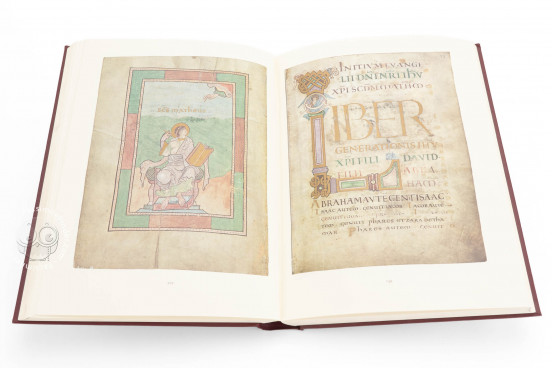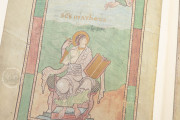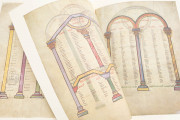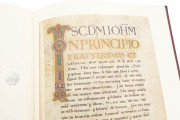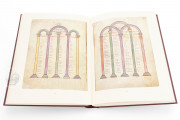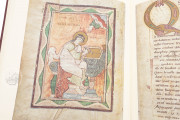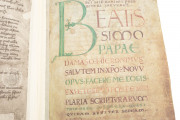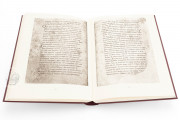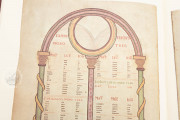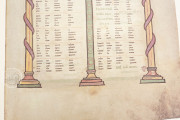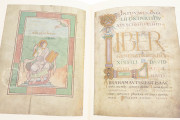The York Gospels is one of the finest illuminated manuscripts surviving from the early English period. Made in Canterbury in the last decade of the tenth century, the book was taken to York by Archbishop Wulfstan by 1020. Written in a single column over twenty-eight lines with gold lettering and enlarged initials elaborated with classical foliage, it achieves a modern aesthetic in a book over a millennium old.
The glory of the York Gospels lies in its staid classicism and understated expressiveness. The generous use of gold and bright inks brings light to the pages, lending them a bejeweled appearance. The decorative program is the homogeneous vision of a single scribe who most successfully merged the Roman and Insular manuscript traditions. It is one of only twenty Gospel books that survive from preconquest England and preserves some of the most refined script and illumination of the period.
An Illuminated Gospel Book
The York Gospels contains sixteen pages of illumination: eight canon tables with their bright architectural frames, three full-page evangelist portraits (John's portrait being missing), four incipit pages that merge text and image, and a colorful Beatissimo papae page in a classical style. A fusion of Roman Rustic Capitals and Caroline Minuscule letterforms make for a lively script enhanced with gold and red initials throughout. An unusual "house" form of canon table framing occurs on fol. 16v, apparently an invention of the talented artist.
Evangelist Portraits that Tell a Story
The evangelist portraits in the York Gospels are somewhat unusual for an English manuscript in that they feature the Hand of God rather than the evangelists' symbols, a feature copied from Carolingian models. The sequence of Matthew, Mark, and Luke implies a narrative. Matthew looks up at the Hand, always in the upper right, making a gesture of oration and takes inspiration for his gospel. Mark sits in thought, but his book is already filled with words as the Hand touches his nimbus. Luke is actively writing as the Hand presents the work with an open palm. The portrait of John is missing, but it may have shown the work complete with John looking at the Hand. Saint Matthew's symbol—the winged man—has been artfully incorporated into the large initial L of the opening page of his Gospel (fol. 23r).
A Living Manuscript
The manuscript, taken to York by Archbishop Wulfstan in 1020, was likely made at Saint Augustine's monastery at Canterbury in the 990s. Aside from a short period when it was kept safe during the English Civil War by Henry King, bishop of Chichester, it has remained at York. It was used as a repository for important documents in Old English relating to the archbishopric through the eleventh century, as well as a homily by Wulfstan. Additional documents in Latin were added through the sixteenth century.
We have 1 facsimile edition of the manuscript "York Gospels": The York Gospels facsimile edition, published by The Marquess of Normanby, 1986
Request Info / Price
